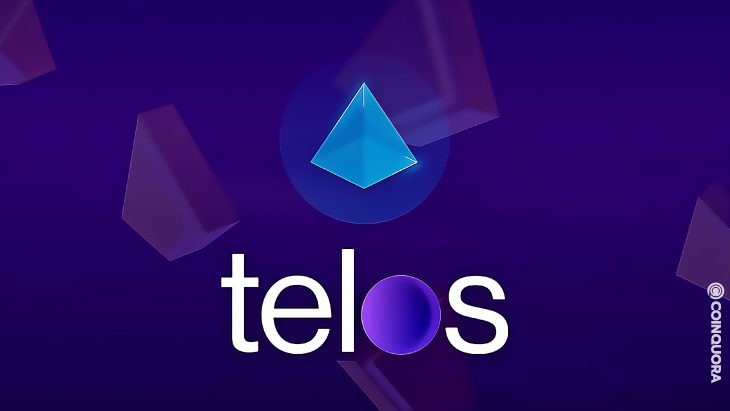- EVMs are blockchain or distributed ledger tech (DLT)-enabled software platforms.
- TLOS Decide Governance engine allows stakeholders to vote and make decisions.
Ethereum Virtual Machines or EVMs are blockchain or distributed ledger tech (DLT)-enabled software platforms. They allow application developers to create decentralized applications (dApps). Software architects really value them, since they don’t have really long downtimes and have the ability to keep created application objects safe from being altered.
If you want to begin using EVMs, then you don’t necessarily have to be an expert coder. That’s because the software is fairly easy to use and it also eliminates the need for acquiring really powerful hardware.
Telos EVM Now Live
Recently, the Telos (TLOS) EVM went live. Its Decide Governance engine allows stakeholders to vote and make decisions together, as a community. The Telos blockchain uses Decide to make changes in the platform and network’s governance. Projects may use Decide along with their own coin or crypto token. This capability is not provided by any other Layer-1 chain. These features are truly unique and available only with Telos.
This type of governance solution allows projects to easily plug into and utilize these services. Even other Layer-1s may utilize the Telos governance engine and in doing so, it would be an ideal example of a blockmesh environment.
With Telos’s innovative model, “the best idea wins.” It’s true democracy, as every token holder gets a vote and unlike some of their competitors, the Telos block producers (BPs) are held by the Telos Blockchain Network Operating Agreements OnchainTBNOA to implement those ideas.
It’s worth noting that there are many other blockchains that have their own governance protocols and ways of providing EVMs, such as Polkadot (DOT), Tezos (XTZ), and Cardano (ADA). While these DLT networks have managed to attract a fairly large number of users, they are still unable to deliver the overall speed, capacity as well as the level of decentralization that’s provided by Telos (TLOS) – which has been ranked consistently by Blocktivity as one of the most high-performing chains in the industry.
Telos Is the Most Versatile Blockchain
Moreover, Telos is also the most versatile blockchain as it can generate blocks for more than 95% of the decentralized applications (dApps) with support for widely-used object-oriented programming languages like C++, Solidity, and Vyper. No other chain in the market can provide this level of functionality.
Douglas Horn, Chief Architect at Telos, CEO at GoodBlock, has previously explained that the Telos blockchain has offered innovative governance features since the initiative first launched its mainnet back in December 2018.
But recent upgrades by the Telos Core Developers have managed to put Telos governance ahead of all other blockchain projects by offering truly powerful, participatory, smart contract-controlled features to the Telos blockchain.
These chain-level tools have also been integrated with dApps deployed on Telos so that they can adapt the solutions for their own governance requirements. This comprehensive suite of software tools, referred to as Telos Decide™, enables dApps to seamlessly incorporate decentralized governance features like initiative ballots, committee or custodian elections, and committee management with configurable ballots that may invoke smart contract actions upon completion. This may include assigning control of accounts and funds, completing transfers, setting configuration parameters, or managing permissions.
Douglas Horn Explains Advantages of Participatory Blockchain Governance
As Horn explained, participatory blockchain governance is useful because it allows a project to adapt based on the priorities or preferences of its members. The key advantage of this is that it prevents communities from splitting “based on unresolved divisions in priorities by various subgroups,” Horn noted.
He also pointed out that the ability to transparently poll an initiative’s community does happen to serve this purpose of consistently resynching different groups so that “ingrained factions are less likely to emerge.”
According to Horn, another important advantage is that of “fluid governance decisions” which provide the ability for continuous iteration in the operation of the chain to streamline various parameters over time “as a modus operandi permitting experimentation that can rapidly be reversed or adjusted if it proves detrimental, or expanded incrementally when changes prove beneficial.”
Horn explained that Telos governance includes validating node election, governance document amendment, work proposal funds allocation, and effective dispute resolution.
As noted by Horn, the term, third-generation, in blockchain has usually referred to the actual blockchain protocols. In this type of model, Bitcoin is a first-gen chain based on proof of work consensus. Meanwhile, Ethereum is a second-gen chain that adds the option to execute smart contracts but still uses proof of work.
Blockchain Governance has Entered a Third Stage
Then, EOS and Tron are third-generation blockchains that use delegated proof of stake (DPoS) consensus mechanisms to enable significantly greater speed, capacity, and computing power for supporting smart contracts with new features like simple account names and no transaction fees. But with advances in blockchain governance tools and protocols, blockchain governance has entered the third stage, Horn wrote in a blog post.
Notably, the Telos EVM recently went live. It’s a Layer-1 Ethereum Virtual Machine, built specifically to power Web 3.0. The Telos EVM serves as a scalable solution for Solidity-powered apps, built with the goal of streamlining the DeFi ecosystem. Unlike other scalable EVMs, Telos EVM is not merely a fork (or update) of the original Go Ethereum code. It’s a completely new EVM that has been redesigned to harness the power that Telos tech aims to offer.
This unique approach enables the Telos EVM to avoid many of the scaling issues that large EVM alternatives may run into. Telos EVM also provides feature parity with Ethereum, which makes it an ideal solution for application developers and end-users seeking an EVM that can keep up with the requirements of mass adoption.


